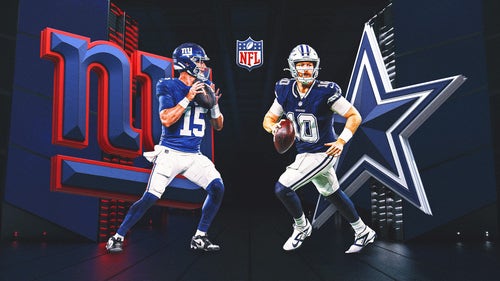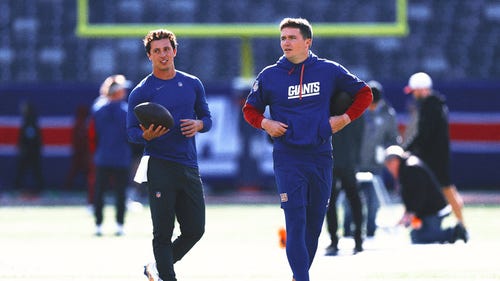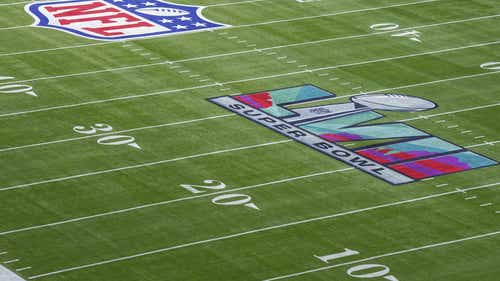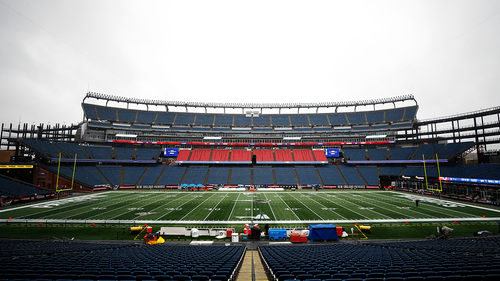
Pro Football 101: Junior Seau ranks No. 53 on all-time list
By Joe Posnanski
Special to FOX Sports
Editor's Note: Throughout 2021 and 2022, Joe Posnanski is ranking the 101 best players in pro football history, in collaboration with FOX Sports. Posnanski will publish a detailed look at all 101 players on Substack. The countdown continues today with player No. 53, Junior Seau.
Junior Seau was a blur. That’s how I remember him. A blur. He was too fast and too much of a whirlwind for the eye to follow.
He was listed as a right linebacker because the San Diego Chargers tended to play some version of Bill Arnsparger’s 5-2 setup, with only two official linebackers on the field. But the truth is Seau was just a LINEBACKER, no designation as right or left or outside or inside needed because he played all of them at the same time.
For opposing offenses, there was no place to hide from Junior Seau.

Junior Seau went to 12 straight Pro Bowls as a Charger and led the team to Super Bowl XXIX. (Photo by Matt A. Brown/Icon Sportswire via Getty Images)
There are some Seau numbers to talk about, and we’ll get to those, but what I remember most about him — and I saw him a lot because I was writing about the Chargers’ division-rival Kansas City Chiefs back then — was the way he would stand out from the rest, as if the telestrator’s circle always ringed around him.
There was one game, a beautiful Sunday in San Diego, bright sunshine covering the field in Bob Ross’ cadmium yellow, and Seau was everywhere: 12 tackles, two picks, one fumble recovery, one sack.
"It was probably the finest performance I’ve ever seen by a linebacker," Chiefs coach Marty Schottenheimer said after that one. But from the stands, it looked like exactly every other Seau game. The guy just never stopped.
Alas, those last five words have a hard edge looking back.
His full name was Tiaina Baul Seau Jr., and he spent his early years in American Samoa. His official bio always pointed out that he did not learn to speak English until he was 7. In American Samoa, the Seau name was sacrosanct; Seaus were village chiefs and community leaders.
Junior used to say that his entire childhood was built around protecting the Seau name. His father, Tiaina Sr., had ferociously high standards, and when any of his children lost in any part of their lives, he would turn away from them or, even harsher, call them lazy.
"I’m afraid of being average," Junior once told Sports Illustrated’s Jill Lieber.
He was anything but average. The young Seau was one of those extraordinary athletes who could do anything: All-America in football*, San Diego player of the year in basketball, an all-conference shot-putter. He once told me that, looking back, his best sport probably would have been baseball had he loved to play it.
*On the Parade Magazine list, Seau was listed without a position because he could play anywhere on the field.
He did not love baseball. But he did love football with all of his heart, all of his soul. He was recruited by everybody and signed to play at USC. He had to sit out a year after scoring below 700 on the SAT even though he was an A student — "I was labeled a dumb jock," Seau would say bitterly — but by his junior year, he was a consensus All-American and Pac-10 Defensive Player of the Year.
His greatest strength was his lack of a weakness. He was a fantastic blitzer, unmatched against the run, terrific in pass coverage, and he had impeccable instincts.
And, for crying out loud, his name was pronounced "Say Ow."
The Chargers took him with the fifth pick in the 1990 NFL Draft.
He was an impact player right away — a Pro Bowler in his second season, first-team All-Pro in his third. Once the defensive guru Arnsparger could build a defense around him. Seau was first-team All-Pro five more times in the next eight seasons, and in all, he played in 12 straight Pro Bowls.
I mentioned that Chiefs game at the top. More than the game itself, I remember one play. Steve Bono was lamentably the Chiefs’ quarterback then, and on one play, he dropped back, and Seau came on the blitz, which was always a scary thing. But then, suddenly, Seau froze. It was a bit like those Taco Bell commercials in which the bell rings, and the person just stops doing whatever they’re doing and runs to Taco Bell.
Anyway, Seau just stopped, like an alarm clock had gone off in his head, and he raced back to the middle of the field. And just when he got there, Bono threw the ball right to him. In an instant, Seau had recognized something in the play, knew exactly where he had to go, and then he was athletic enough to get there, just in time to intercept the ball. It was almost beyond belief.
I say "almost" because Seau did stuff like that all the time.
Those numbers I mentioned: NFL historian John Turney has been on a mission to count sacks and tackles for loss in the years before they became official statistics. The sack became official in 1982, so he has had a little bit less work to do on that. But tackles for loss didn’t become official until 1999, midway through Seau’s career, so there’s much more to collect and calculate.

Seau blitzing was a scary prospect for any NFL quarterback, including Houston Texans QB David Carr in 2002. (Photo by Matt A. Brown/Icon Sportswire via Getty Images)
Turney calculates that Seau made 168 tackles for loss, more than any of his contemporary linebackers. That’s more than Ray Lewis. That’s more than Derrick Brooks. And, oh, those tackles for loss don’t include his 56.5 sacks. The guy devoured everything behind the line of scrimmage.
And he punctuated each TFL with a punch into the air.
"The best defensive player in the league," Bill Belichick called him as far back as 1994, when Belichick was coaching the Cleveland Browns.
You would expect a player with Seau’s motor and intensity and drive to have a relatively short career. But he played in the NFL for 20 years — only Clay Matthews Sr. played more games as a linebacker. After all the years in San Diego, Seau became more of a role player for the Dolphins and then for Belichick and the Patriots. He did not retire until age 40.
Sadly, we now know the heavy toll that football took on him. In May 2012, Seau’s girlfriend found him dead with a self-inflicted gunshot wound to his chest. The National Institute of Neurological Disorders and Stroke later found definitive signs of CTE in his brain. He suffered greatly in his years after football, but he would do all he could to not let on. He never lost his fear of being average.
"Superman," Peter King wrote sadly after Seau’s death, "never asks for help."

In August 2012, Patriots players and fans at Gillette Stadium paused for a moment of silence to honor Seau during a game against the New Orleans Saints. (Photo by Jim Rogash/Getty Images)
The last time I saw Seau was in San Diego at a charity banquet he hosted. I was writing a story on NASCAR star Jimmie Johnson, and Seau’s foundation was honoring Jimmie as one of the greatest athletes ever to come out of San Diego. Seau spent so much of his time on charitable endeavors.
Here was the thing about that day: Seau moved about the stage with the same blurring energy that he always had on the field. He bounced from one side of the stage to the other, poking fun at his mother, pushing people in the front row to raise their auction bids, telling his dad to lose some weight and going after Johnson for being so … placid?
"I don’t get you, man!" Seau roared. "You’re up here, and you’re all humble and meek and stuff. And then you get on the racetrack, and you’re the man! You’re out there racing and slamming into cars … and then you’re, like, quiet and nice. What’s that all about?"
Jimmie smiled a bit and shrugged.
"That’s what I’m talking about!" Seau screamed. "What's with you, man?"
Jimmie laughed. What else could he do? He had been tackled for a loss by Junior Seau, just like so many others.
Joe Posnanski is a New York Times bestselling author and has been named the best sportswriter in America by five different organizations. His latest book, "The Baseball 100," came out Sept. 28.










